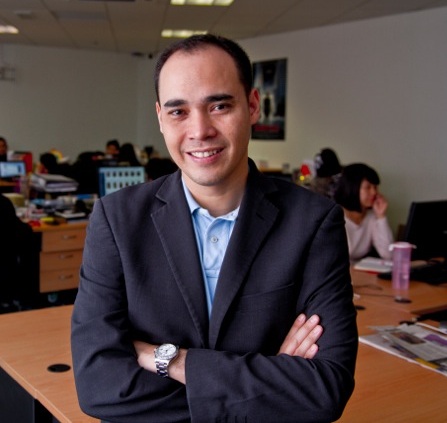Disrupt: More success stories needed to plug funding gap
By A. Asohan November 28, 2013
- Success begets success – as more companies make it, more money is re-injected into ecosystem
- If you can’t convince a VC to fund you, you may need to re-look the business to see if it’s viable at all

THERE is an undeniable gap between the potential of South-East Asia as a market for technology startups, and the number of venture capital funds available to such entrepreneurs, but that will change when there are more success stories.
“The conversation we’re having today … is the right conversation,” DTA Capital Partners chief executive officer Dali Sardar acknowledged at the monthly Disrupt panel discussion and networking session organised by Digital News Asia (DNA), which on Nov 27 focused on the theme No love for Asean? Addressing the regional funding gap.
“This conversation we’re having today is the exact same conversation the American Venture Capital Association had 40 years ago. They had the same problems – there was a lot of money, but entrepreneurs were still not getting funded,” he said.
Because of the dearth of private sector investments, many US technology ventures were initially funded by government, Sardar said. “It’s the same thing we’re seeing here in South-East Asia. We’re going through the same trend.
“What changed in the United States were the success stories. When you have a few success stories, the entrepreneurs who exited successful businesses in turn became investors,” he said, noting that this would drive the ecosystem.
“What we need in Asia is a couple of big success stories. This is the trend; there is no shortcut around this,” he added.
His fellow panellist Patrick Grove, founder and CEO of the Catcha Group, concurred, “The difference between the United States and Europe and this part of the world are success stories. Success breeds success,” he said.
When there are big success stories, then those who have invested in such companies would have the confidence to recycle their money back into the technology ecosystem, Grove argued.
The Catcha Group has been successful enough, with three public-listed companies under its belt – two in Australia and one in Malaysia – with a total market capitalisation of about RM1.5 billion. And true to Grove argument, it is in the midst of launching its own venture capital fund which is expected to take off next January.
He also noted that the people behind other Internet successes such as JobStreet.com and MyEG – two of the most successful ‘first wave dotcoms’ in all of South-East Asia, have also become either angel investors or have the financial wherewithal to launch new businesses.
For instance, MyEG is contributing RM20 million to the RM60-million (US$19-million) seed fund being established by Cradle Fund Sdn Bhd, an agency under Malaysia’s Ministry of Finance. MyEG and tis founder and chief executive officer T.S. Wong have also acted as angel investors in other startups.
Grove was pretty much the catalyst for the Disrupt discussion, when he spoke at the AVCJ Private Equity & Venture Forum 2013 in Singapore in July, saying the lag came from weak leadership and business-savvy within venture capitalists (VCs) in South-East.
At that forum, he said that given the economic projections for the region, there was a significant gap. The United States has about 1,000 VC funds; China has 600 and India has 400. South-East Asia, which boasts some of the most Internet- and smartphone-savvy populations in the world, has only 20 such funds.
 “This is an insanely low amount,” noted Disrupt moderator Karamjit Singh, also the founder and CEO of DNA. “That number Patrick (Grove) highlighted was pretty much the trigger for today’s discussion.”
“This is an insanely low amount,” noted Disrupt moderator Karamjit Singh, also the founder and CEO of DNA. “That number Patrick (Grove) highlighted was pretty much the trigger for today’s discussion.”
However, Grove (pic) also noted that VC funds were not the only avenue open to entrepreneurs.
“We ourselves started in 1999, and we’ve always found it tough trying to get VC funding. If you look at all the companies we’ve had, we’ve managed to raise something like US$150 million to US$200 million over the last 14 years, and only US$2 million of that came from a VC fund, Intel Capital. That’s a mere 1%,” he said.
The Intel Capital injection was for a company called Dealmates, a joint venture between Catcha and MindValley.
“It’s pretty hard to raise VC funds in the region, but it’s not impossible. There are people building 100-million; 500-million or one-billion-dollar companies, and they’re doing that because they managed to get funding.
“Since the funding scene is so tough here, entrepreneurs need to be more creative in being able to find other sources of funding. We [at Catcha] have been very fortunate since we’ve built relationships with fund managers in Australia, and managed to bypass the VC channel.
“But that being said, we had to wait eight years before we could legitimise that fund-raising path – before that we had to do the ‘friends and family’ funding rounds; I myself had to re-mortgage my own house twice – in 2002 and 2004 – to fund Catcha,” he said.
“That’s Lesson No 2: You don’t have to necessarily rely on VCs; there are so many other sources of funding,” he added.
The third thing that has to happen, after sufficient success stories and entrepreneurs themselves being more creative in getting funding, is government support. While the Malaysian and Singaporean governments have been supportive for a number of years, more governments in other South-East Asian countries are also beginning to back the startup ecosystem.
“There is a lot more support now than there were five or 10 years ago,” said Grove.
 ‘You need balls of steel’
‘You need balls of steel’
One entrepreneur who is feeling the pain very keenly was Disrupt panellist Nizran Noordin (pic), cofounder of taxi-booking service TaxiMonger, which has been surviving in a particularly competitive environment on a bootstrapped budget.
Nizran said that his company is up against fellow homegrown player MyTeksi and more recently EasyTaxi, a Latin America-founded company now owned by German powerhouse Rocket Internet, which is pumping in US$15 million into the business here.
He also noted that taxi companies themselves have started developing their own apps, such as Sunlight Unicablink which has 10,000 taxis in its stable, and Public Cab, which has 4,000.
“We’re very happy with the market and product validation we have, with about 15,000 users, but … I would like to have a user base of 1.5 million users – and we can’t reach that unless we can scale the business,” he said.
Nizran founded TaxiMonger with funds from his existing systems integrator business, to the initial tune of RM800,000, but believes that he needs an additional RM2 million at least to scale the company.
[RM1 = US$0.31]
“I’ve met about 40 to 50 VCs in Singapore, and have access to a database of another 30 based in the Middle East,” he said, but nobody has bit yet.
“I think the process of getting a VC is pretty much like looking for a wife. One of VCs I met in Dubai, who owns his own football club in the United Kingdom, kept saying he would be coming in, but it hasn’t happened. It’s like having a girlfriend who keeps saying, ‘Yes, I’ll marry you; I’ll marry you,’ but nothing ever happens,” he added.
“It’s exciting but tough, and if you want to be an entrepreneur, you will need balls of steel,” said Nizran. “Meeting one VC prepares you for meeting the next – it’s like the dating game; you learn what you did wrong with your first.”
Next page: If you can't convince a professional investor, then perhaps there is no business


